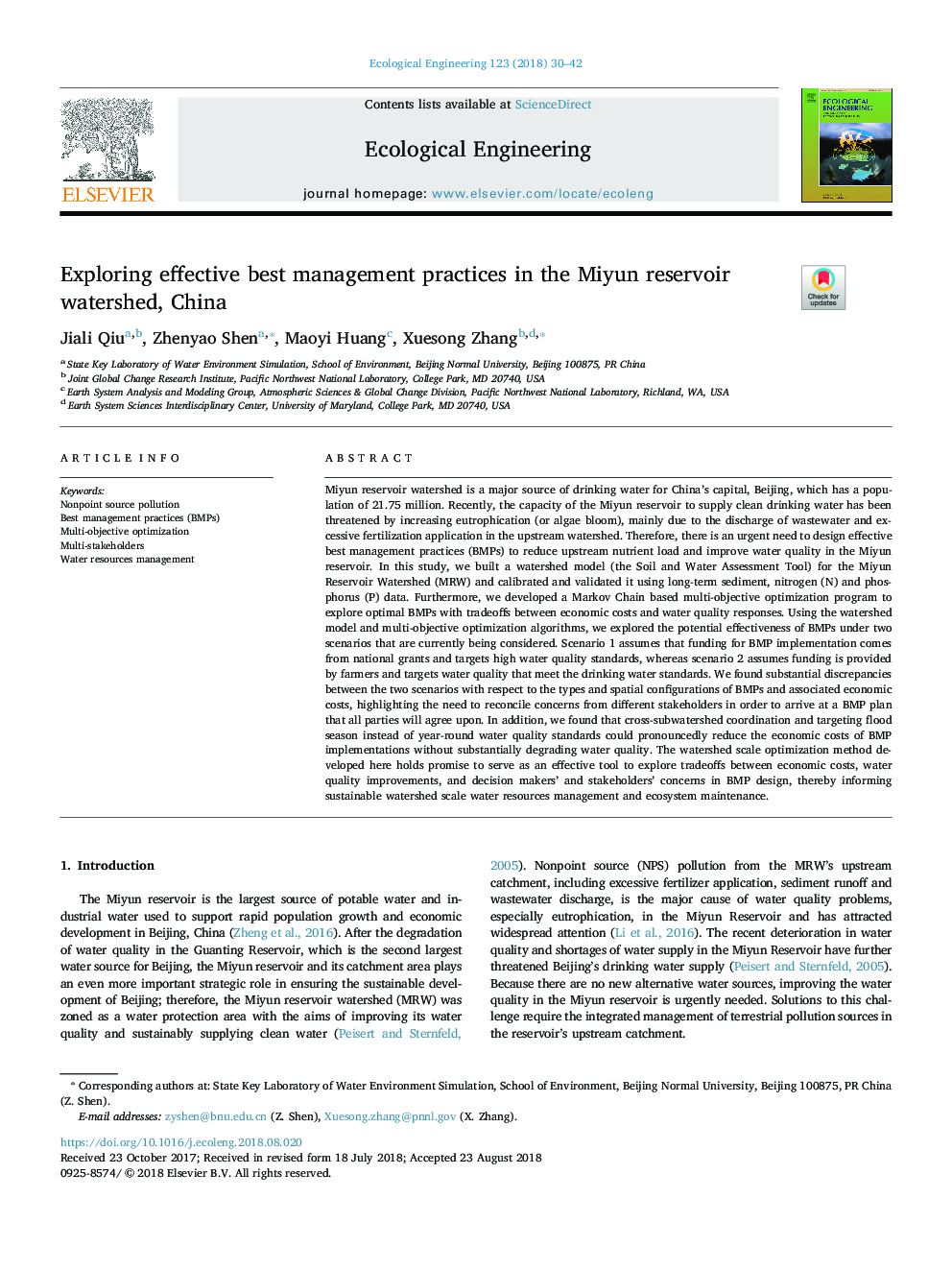| Article ID | Journal | Published Year | Pages | File Type |
|---|---|---|---|---|
| 10144336 | Ecological Engineering | 2018 | 13 Pages |
Abstract
Miyun reservoir watershed is a major source of drinking water for China's capital, Beijing, which has a population of 21.75 million. Recently, the capacity of the Miyun reservoir to supply clean drinking water has been threatened by increasing eutrophication (or algae bloom), mainly due to the discharge of wastewater and excessive fertilization application in the upstream watershed. Therefore, there is an urgent need to design effective best management practices (BMPs) to reduce upstream nutrient load and improve water quality in the Miyun reservoir. In this study, we built a watershed model (the Soil and Water Assessment Tool) for the Miyun Reservoir Watershed (MRW) and calibrated and validated it using long-term sediment, nitrogen (N) and phosphorus (P) data. Furthermore, we developed a Markov Chain based multi-objective optimization program to explore optimal BMPs with tradeoffs between economic costs and water quality responses. Using the watershed model and multi-objective optimization algorithms, we explored the potential effectiveness of BMPs under two scenarios that are currently being considered. Scenario 1 assumes that funding for BMP implementation comes from national grants and targets high water quality standards, whereas scenario 2 assumes funding is provided by farmers and targets water quality that meet the drinking water standards. We found substantial discrepancies between the two scenarios with respect to the types and spatial configurations of BMPs and associated economic costs, highlighting the need to reconcile concerns from different stakeholders in order to arrive at a BMP plan that all parties will agree upon. In addition, we found that cross-subwatershed coordination and targeting flood season instead of year-round water quality standards could pronouncedly reduce the economic costs of BMP implementations without substantially degrading water quality. The watershed scale optimization method developed here holds promise to serve as an effective tool to explore tradeoffs between economic costs, water quality improvements, and decision makers' and stakeholders' concerns in BMP design, thereby informing sustainable watershed scale water resources management and ecosystem maintenance.
Keywords
Related Topics
Life Sciences
Agricultural and Biological Sciences
Ecology, Evolution, Behavior and Systematics
Authors
Jiali Qiu, Zhenyao Shen, Maoyi Huang, Xuesong Zhang,
